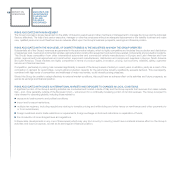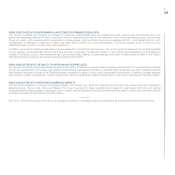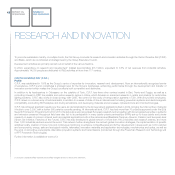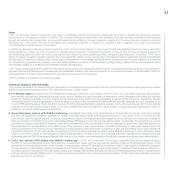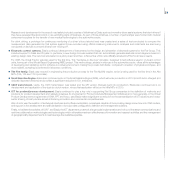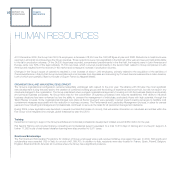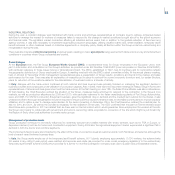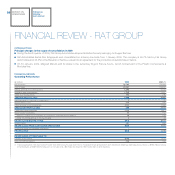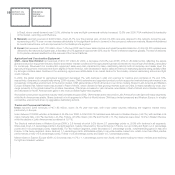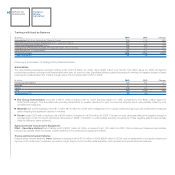Chrysler 2009 Annual Report Download - page 54
Download and view the complete annual report
Please find page 54 of the 2009 Chrysler annual report below. You can navigate through the pages in the report by either clicking on the pages listed below, or by using the keyword search tool below to find specific information within the annual report.
53
INDUSTRIAL RELATIONS
During the year, a constant dialogue was maintained with trade unions and employee representatives at company level to achieve consensus-based
solutions to manage the impact on workers of measures taken to respond to the change in market conditions brought about by the global economic
and financial crisis. The significant market contraction affecting all industrial sectors meant that, in addition to the gradual reduction of fixed-term and
agency workers, it was also necessary to implement large-scale production stoppages, utilising vacation banks and, where available, temporary layoff
benefit schemes or other measures based on collective agreements or company policy. Nearly all Sectors within the Group undertook restructuring and
reorganisation during the year.
There was also intensive collective bargaining at various levels, resulting in major agreements being reached with trade unions on pay and employment
conditions in countries where Group companies are located.
Social dialogue
At the European level, the Fiat Group European Works Council (EWC), a representative body for Group employees in the European Union, took
part in information and consultation on the Group’s activities, as provided under EU Directive 1994/45/EC (now incorporated in Directive 2009/38/EC),
with particular reference to those issues having a transnational impact. The EWC, established in 1997, has 30 members and its composition reflects
the geographic distribution of Group employees in Europe. A meeting was held with the EWC’s select committee in May. At the annual plenary meeting,
held on 26 and 27 November 2009, management representatives gave a presentation of Group results, conditions and trends in the market, and sales
performance for the year. There was also an explanation of measures put in place to confront the current economic downturn and, for certain Sectors,
plans for reduction of the workforce related to the rationalisation of overhead costs or a transfer of activity.
In Italy, dialogue with the trade unions continued at both national and local level and was primarily focused on managing the significant decline in
business volumes and consequent under-utilisation of production capacity. Also in 2009, there were two important meetings at Palazzo Chigi in Rome with
representatives of national and local government and the trade unions. At the first meeting on June 18th, the Italian Prime Minister was also in attendance.
At that meeting, the Chief Executive outlined the situation of the Group, measures being employed to respond to the contraction in the Group’s core
markets, as well as production allocations for 2009 and 2010, with particular reference to the Italian manufacturing plants of Fiat Group Automobiles,
Iveco and CNH. For CNH’s Construction Equipment business, given the significant drop in demand and the medium term outlook for the market, it was
underscored that a thorough reorganisation would be required to ensure current production remains in Italy, to rationalise current plants to improve capacity
utilisation and to define a plan to manage redundancies. At the second meeting on December 22nd, the Chief Executive outlined the industrial plan for
Italy for 2010 and 2011, as well as the conditions necessary for the realisation of that plan. The CEO confirmed that the plant at Termini Imerese would
discontinue auto production in 2011 and stated that, as there was no internal solution which would guarantee future employment for workers at the site,
the Group stood ready to collaborate with government and unions, supporting viable proposals for conversion of the site which might be put forward by
the Region of Sicily, other local authorities or private sector groups.
Management of production levels
Group production continued to be heavily influenced by extremely turbulent and volatile markets with erratic demand, such as for FGA in Europe, or
depressed demand, such as for trucks and construction equipment. During 2009 also the agricultural equipment market experienced a significant fall in
demand in both the tractor and combine segments.
The components Sectors were also impacted by the effect of the crisis on production levels at customer plants, both Fiat Group and external, although the
level of impact varied between business lines.
In Italy, the Group made ample use of the temporary layoff benefit scheme. At 11 plants, employing approximately 11,000 workers, the scheme limits
(52 weeks in any rolling 2-year period) were reached and recourse was made (as provided for under social emergency legislation) to the extraordinary
temporary layoff benefit scheme (CIGS) which provides for a further 12 months coverage for company crisis due to sudden and unforeseeable events.



